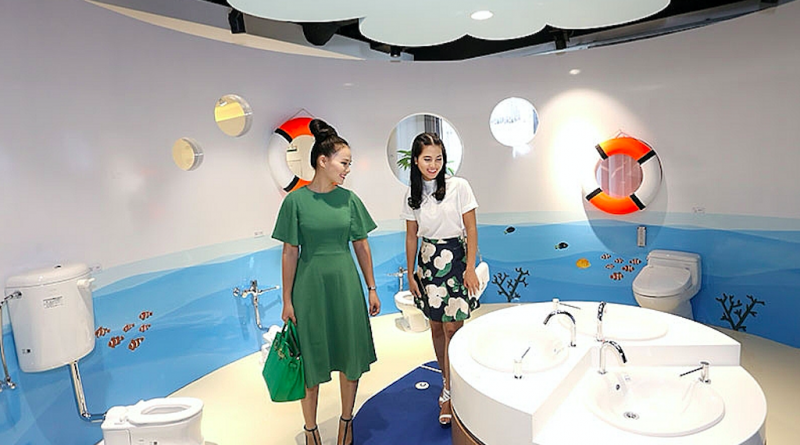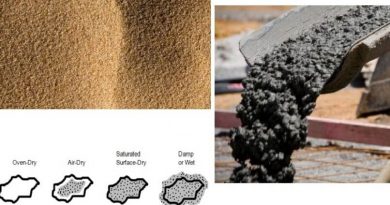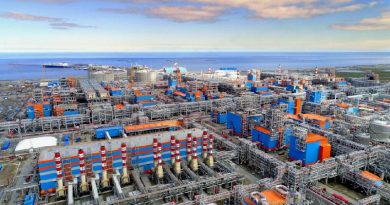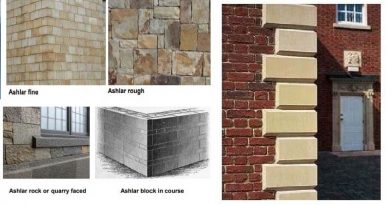Green construction materials gaining ground
An inevitable trend
Green building, or sustainable development in construction, has become an inevitable trend in the context of global climate change. Green buildings usually have long life cycles and attain the efficient consumption of resources to ensure the comfort and convenience of the users, while minimising any harmful impacts on the environment by using green building materials.
“Accordingly, green or sustainable building materials are characterised by having one of the following traits: non-toxicity, high recycled content, efficiency, energy saving, a long life-cycle or eco-consciousness to reduce pollution in the soil, air, and water, while contributing to the efficient use of energy in construction works,” said Dr. Thai Duy Sam, vice chairman of the Vietnam Association of Building Materials.
As said by the World Green Building Council and Green Building Certification Institute, buildings worldwide account for 17 per cent of fresh water usage, 25 per cent of wood harvest, 33 per cent of carbon dioxide emissions, 30-40 per cent of energy usage, and 40-50 per cent of raw material consumption during the process of construction and operation.
At the same time, the building materials industry also has negative environmental impacts. This is reflected in the amount of energy consumed and the impacts exerted on the environment during the exploitation and processing of raw materials, the production of finished materials, and transportation to factories or places of construction.
According to estimates by the Ministry of Construction (MoC) and the Vietnam Chamber of Commerce and Industry (VCCI), the demand for bricks, particularly clay bricks, will be 24-33 billion from 2015 to 2020. Meanwhile, one billion bricks made of baked clay require 1.5 million cubic metres of land and 150,000 tonnes of coal to burn the kiln, which is estimated to emit 0.57 tonnes of CO2 into the environment. Given the above demand for bricks from clay, by 2020 Vietnam will lose 50 million cubic metres of clay, five million tonnes of coal, and discharge 19 million tonnes of CO2.
Therefore, the use of baked clay bricks will consume a lot of farmland, causing a reduction in agricultural area and thus seriously affecting food security. However, these figures only show some of the impacts related to production stages, while information about the exploitation and transportation of materials is not sufficiently provided. In addition, many other popular construction materials, such as cement, steel or glass, also consume a lot of energy and exert considerable impacts on the environment.
Speaking at the 2nd International Conference on Building Materials and Construction held in 2017, Deputy Prime Minister Trinh Dinh Dung said that besides the remarkable achievements the building materials industry has produced over the past few years, more attention should be paid to the development of unbaked building materials to replace burnt-clay building products.
Today, the world is seeking to promote sustainable development in the construction sector on the basis of the economical, efficient, and eco-friendly use of natural resources. Meanwhile, the building materials industry plays a key role in supporting the development of the construction and real estate sectors. Construction materials account for 30-40 per cent of construction products. At the same time, the quality of construction materials will determine the quality and longevity of the building. Thus, it is completely rational to give some degree of priority to the industry.
Furthermore, MoC suggested the government to continue to direct and promulgate preferential policies to attract investment and encourage the development of new types of construction materials that are resource-saving, energy-efficient, environmentally friendly, responsive, and adaptable to climate change—in line with the development trends of the world.
Additionally, MoC also recommended that the Ministry of Natural Resources and Environment, the Ministry of Finance, and the Ministry of Science and Technology should continue to co-ordinate in the planning of mining areas; jointly develop sound policies on the taxation of natural resources, the import and export of materials, as well as environmental protection charges; and support research activities for the development of new products.
Pioneering businesses
Nguyen The Thuong, general director of Thanh Chi JSC, said that the company is the owner and the main investor of many construction stone mines in Ba Ria-Vung Tau, with a reserve of over 12 million cubic metres and a total production capacity of 700,000 cubic metres per year, processing on an advanced production line imported from Russia, which is developed based on the TITAN technology. This production line is capable of supplying all kinds of high-quality construction stones according to customers’ demands, especially the 5×16 mm and 5×19 mm stones or artificial sand made from stone instead of natural sand.
Cement is also an indispensable material in construction. However, the production of cement might be considered the biggest culprit behind the greenhouse effect. Throughout the production of a tonne of cement, 770 kilogrammes of CO2 will be added to the air after firing the materials.
Officially joining the Vietnamese market after the merger and acquisition (M&A) deal between Siam City Cement Group (SCCC) and Holcim Vietnam, all products of the newly-established brand INSEE fully satisfy the necessary standards for eco-friendly products. Nguyen Cong Minh Bao, director of Sustainable Development at INSEE Vietnam, said that this was the long-term plan of the company right from the beginning, in accordance with the sustainable development path that the company has been pursuing for more than 20 years.
With the new brand of INSEE, the company has officially acquired the Green Label for all of its product lines, listing INSEE’s products in the Green Database of the Vietnam Green Building Council (VGBC) and the Green Label of the Singapore Green Building Council (SGBC), while at the same time ensuring that all products strictly comply with various international green building rating systems, such as LOTUS, Green Mark, and LEED (Leadership in Energy and Environmental Design).
“With green label products, INSEE is trying to create more added value for our customers and gather competitive advantages in the building materials market,” Bao said.
Similarly, the domestic construction paint market also made numerous efforts to improve and develop new production technology towards green products. Do Huu Nhon, sales director of Galaxy Paint Vietnam JSC—a well-known domestic paint company—said that all of its products meet green criteria. Specifically, input materials are treated by Nano antibacterial technology, resulting in lead-free and mercury-free products which also have a low content of volatile organic compounds (VOC).
“The manufacturing of products following green standards is now a compulsory obligation. At the same time, this also contributes to the protection of the environment and the protection of human health, while attracting more customers to the products,” Nhon said.
Along with the adoption of green criteria in the production of paint and coatings, the use of glass products with energy-saving features in construction works also attracts great attention from many developers and contractors. Energy-efficient glass has a low degree of emissivity and thermal conductivity to restrain the heat transferred between the indoor and outdoor environment, normally through a system of glass walls or glass panels. Through this, the products help to save more energy costs on the air conditioning and heating systems, yet are still able to maintain the best temperature for the building under any weather condition.
As a pioneer in this field who has been actively conducting research and applying modern science and technology into the production and development of green materials, Viglacera Float Glass Company has entered into a co-operation with Von Ardenne GmbH (Germany) to open the very first energy-efficient glass production line in Southeast Asia, with a capacity of 2.3 million square metres per year. The products have achieved the European standard EN 1096: 2012.
Nguyen Minh Khoa, managing director of Viglacera Float Glass Company, said that Viglacera’s energy-efficient glass production line is completely automated. The raw materials are white glass ingots which are placed directly in the mould void and cast to fill the mould, then rinsed in demineralised water before being coated with metal oxides, metals, and silver, as well as receive protective and anti-erosion coatings in a vacuum chamber.
Especially, the water systems used to wash the glass ingots before coating are the DI Water Desalination System and the Reverse Osmosis Water Purification System. Water goes through two stages (RO1 and RO2) in both these systems to make sure that the conductivity of water is less than one microsiemens. Therefore, the surface of the glass sheet after washing will be clean enough to ensure the best adhesive strength of coating materials to the glass.
Nguyen Quang Cung, vice chairman of the Vietnam Association of Building Materials, said that energy-efficient glass is becoming an alternative to conventional glass because of the tremendous economic benefits it can bring to modern construction works. Currently, energy-efficient glass is divided into two widely-used product lines called Low-E glass and Solar Control glass. In the Vietnamese market, these products are mainly imported from Belgium and France.
Nevertheless, according to the assessment of some experts in the building materials industry, Viglacera’s energy-efficient glass products are gradually replacing imports. Besides, these products have helped to solve the problem of maintaining energy efficiency in line with different weather conditions and save 30-40 per cent of the energy cost of air conditioning systems.
Source: vir.com.vn







